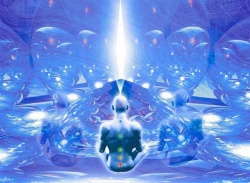Buddhist Attitude Toward Killing of Animals
by Jeffrey Hays
Most devout Buddhists are vegetarians who are opposed to killing any animals. Buddhists believe in reincarnation and they maintain that killing an animal is killing the soul of a being that may one day be a human being. Many Buddhists go as far as rescuing insects from their tea. Some Buddhists hold special ceremonies for dead chickens or dead fish. Tibetan Buddhists believe that dogs are the last reincarnation before rebirth as humans, and as a result the country is filled with mangy dogs.
Many Buddhists believe that equal compassion must be extended to all living things. Some Buddhists believe that killing flies, mosquitos and even bacteria is wrong and walk softly so as not to trample insects and have special filters for their drinking cups and weak masks to prevent them from inadvertently consuming microorganisms. Despite this, there is a prevailing view that not are all living things are alike and equal and only humans are capable of reaching enlightenment
The are a number of stories in Buddhist literature about Bodhisattvas and Buddhas giving their life for animals. In one often-told tale, The Buddha, in his previous incarnation as the Prince of Benares, lashed his own throats with a piece of bamboo so an exhausted tigress could eat him and take care of her five newly-born cubs. In another famous story, a celebrated Bodhisattva who was a king freed a pigeon from a hawk by giving the hawk a pound of his own flesh.
However, Peter Garfinkle wrote in National Geographic, "Even though The Buddha voiced his opposition to killing animals either for food or ritualistic passages from early Buddhists texts suggest that not only did he sometimes eat meat he may have died from food poisoning from contaminated pork. (Other say he died from eating a poisonous mushroom)."
Text Sources: World Religions edited by Geoffrey Parrinder (Facts on File Publications, New York); Encyclopedia of the World’s Religions edited by R.C. Zaehner (Barnes & Noble Books, 1959); Encyclopedia of the World Cultures edited by David Levinson (G.K. Hall & Company, New York, 1994); The Creators by Daniel Boorstin National Geographic articles. Also the New York Times, Washington Post, Los Angeles Times, Smithsonian magazine, Times of London, The New Yorker, Time, Newsweek, Reuters, AP, AFP, Lonely Planet Guides, Compton’s Encyclopedia and various books and other publications.
